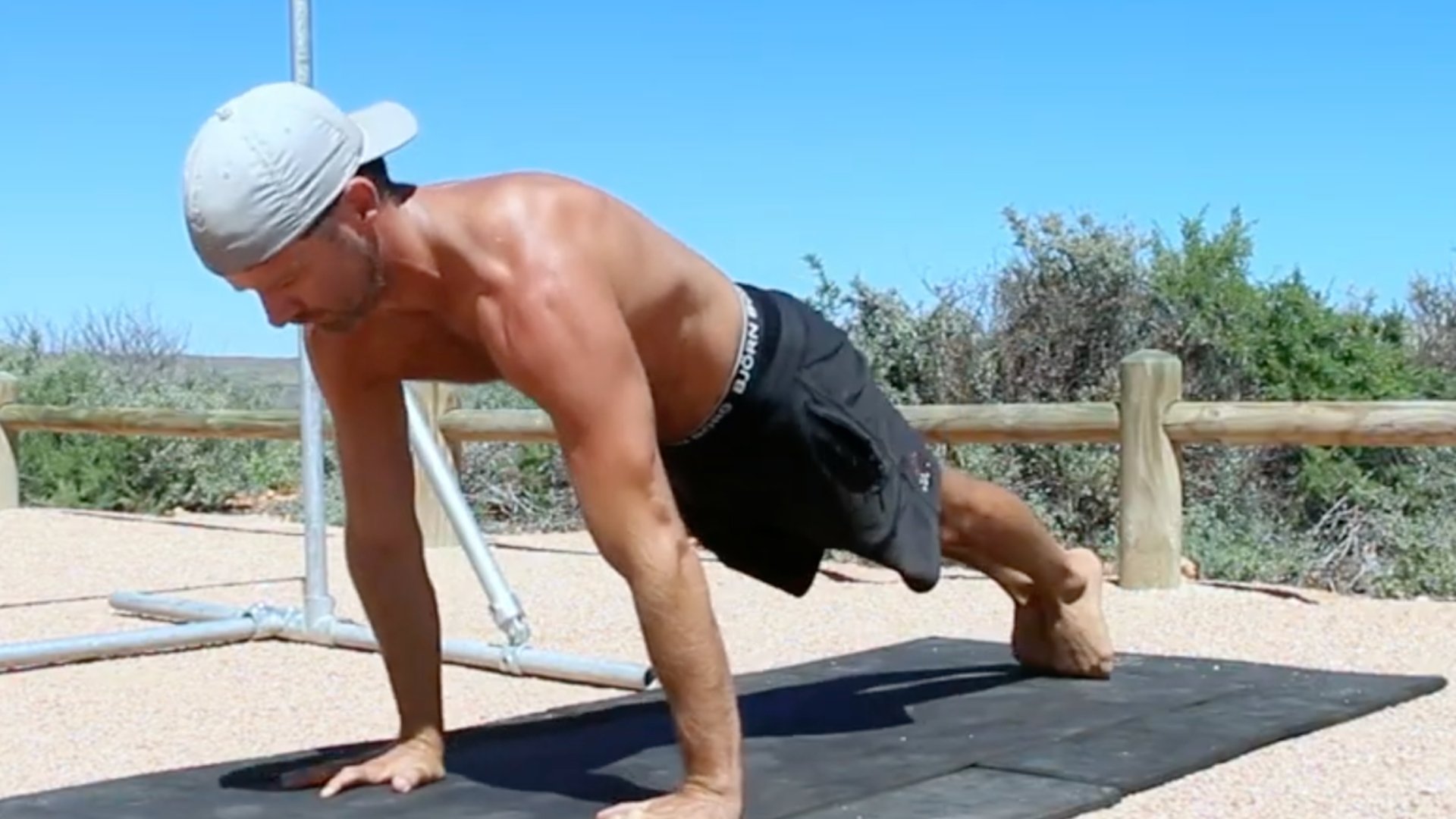
How to Fix Shoulder Pain Pressing Movements?
There have been times during my training when I've experienced terrible shoulder pain while performing bench press or push-ups.
It's a weird pain you feel deep down in the front of the shoulder.
Almost like a stabbing pain.
It's not your chest or your triceps.
It's deep in the shoulder, slightly towards the front.
Have you felt it before?
What is it, and how do you fix it?

4 Key Reasons Why You Struggle With Push-ups.
I used to be terrible at push-ups.
My upper body horizontal pushing strength was one of my biggest weaknesses.
I grew up playing sports like Aussie Rules Footy, Soccer, Tennis and Cricket. None of which require significant horizontal pushing strength.
I also competed in endurance sports for a number of years with the focus of swimming, cycling and running. My leg strength and upper body pulling strength has always been stronger than my pressing strength.
But that all changed when I started training in the gym, lifting weights, building strength and getting ripped.
It wasn't until I started training in the gym that I realised how weak my bench press, push-ups, and dips were.
I sucked.
So, I went to work.

How to Increase Core Strength with this Single Movement.
Are you a gymnastic skill seeker who struggles to maintain the hollow body shape in movements like push-ups, chin-ups, handstands, back and front levers?
We often hear coaches telling their clients to "contract your core", "brace your abdominals", or "get tight."
What do these cues actually mean?
Do we breathe in?
Do we breathe out?
Do we crush walnuts between out but cheeks?
How do we increase our midline tension and stop our lower back arching in gymnastic movements that require a tight hollow body shape?
The most critical movement its………

When should and shouldn't I use a band for chin-ups?
I recently did a GST Junkies podcast with Erdi (@lerningtohuiman) on levelling up your chin-ups. In it, we talked about how to level up your chin-ups and pull-ups. Specifically, we spoke about how we help our online students build the strength to get their first chin-up.
You might be surprised to find out that we don't use bands. You can listen to the podcast on Spotify, Apple Podcast, YouTube or Google Play.
This podcast got me thinking more about banded chin-ups, so I decided to do a post on when we should use bands for chin-ups.

A commonly overlooked part of pike and pancake flexibility.
If you're like me, you want to increase your pike and pancake flexibility.
Let me guess.
You spend a lot of time stretching your hamstrings, glutes, obliques, quadratus lumborium (QL's), traps and spinal erectors.
I get it, these are the commonly used exercises for pike and pancake gainz and exactly what I’d been focusing my training on.
But, I'd often feel that something was missing.

How to start training core compression strength.
If you're an adult gymnastics skills seeker that wants to improve movements like L-sits, toes-to-bar, skin the cats, pistol squats, press the handstand and overall gymnastic skills, then core compression strength is going to be essential.
The good news is you're in the right place now.
Goal setting for strength and flexibility training.
What are you gymnastics strength and flexibility goals?
Are they SMART (Specific, Measurable, Achievable, Realistic and Timely)?
In this episode StreTch and Erdi share:
Their current strength and flexibility goals.
The importance of setting training goals.
Motivation and sense of direction.
Breaking bigger goals down into smaller milestones.
Not putting all you eggs in one basket and looking at the bigger lifestyle picture.
Embracing failure.
We hope you enjoy this episode!

How to start training pike flexibility
Over the last 18 months, I've been working to increase my flexibility.
As an adult, it's easy to fall into the trap of thinking that we'll never be flexible.
"Either you're born with it, or you're not."
"I'm too old to start training flexibility."
I get it.
After years of training and competing in endurance sports and then doing CrossFit, I never thought of myself as someone who could be flexible.
Increasing flexibility is like building strength; it takes time and consistency and I believe it's never too late to increase flexibility
With that said, let's get back to the point of this post and talk about how to start training pike flexibility.
Check Your False Grip
If you’re working towards your first strict muscle-up, looking to increase your unbroken muscle-up reps, or searching for more advanced gymnastics rings training, this blog is for you.
In this blog, I'm gonna share some ideas around false grip training for gymnastics rings muscle-ups and more.
I also cover these checks in this YouTube video:

How to start training Pancake Flexibility
Are you a gymnastics skill seeker who wants to accomplish a chest-to-floor pancake?
When you sit on the floor to perform your pancake stretches, do you maintain a flat back, or do you round your back?
Do you need to maintain a flat back when training the pancake?
It's a fair assumption. We're often told to "maintain a flat back" in other hip-hinging movements such as deadlifts and good mornings.
"If you round you're back, you'll get injured".
Is that so?
I believe the fitness industry has taken the whole neutral spine idea too far.
Let's face it, real life and sport are not ridged and straight. We don't move through life with a neutral spine.
It's not very "functional" to only train with a neutral spine.
